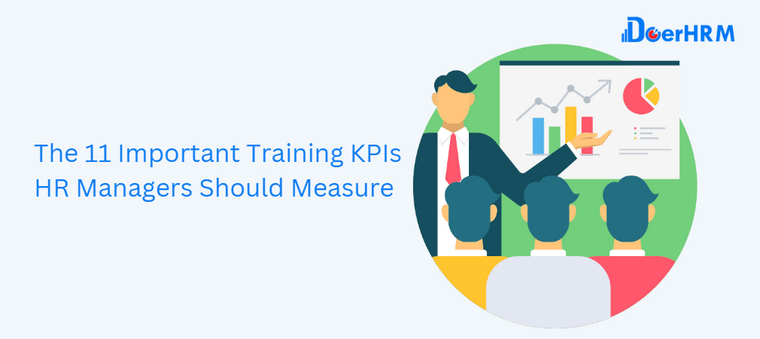- 1-905-452-8193
- Contact Us
- Member Login
- Get Listed Today
- 220,911 members

KPIs, or key performance indicators, are measurable metrics used to evaluate the effectiveness and success of an organization or department in achieving its goals and objectives. When it comes to training, HR managers should measure a variety of KPIs to ensure that their training programs are effective in helping employees acquire new skills and knowledge and that these skills are being applied to their job responsibilities.
Here are the 11 most important KPIs for training that every HR manager should measure:
Training ROI (Return on Investment) is a key performance indicator (KPI) that measures the financial return on investment from training programs. This metric allows HR managers to evaluate the effectiveness of training programs by comparing the cost of the training to the benefits gained by the organization.
To calculate training ROI, the total cost of the training program is divided by the total benefits gained. The benefits can be measured in a variety of ways, such as increased revenue, improved productivity, reduced turnover, and enhanced customer satisfaction.
For example, if a company spends $50,000 on a training program that results in a $100,000 increase in revenue, the training ROI would be 100 percent ($100,000 – $50,000 = $50,000 / $50,000 x 100% = 100%). A positive ROI indicates that the benefits of the training program outweigh the cost, while a negative ROI indicates that the cost of the training program exceeded the benefits gained.
Training ROI can help HR managers to make data-driven decisions about training investments, prioritize training programs, and identify areas for improvement in the training process. By tracking training ROI over time, HR managers can also measure the impact of training on the organization’s bottom line and demonstrate the value of training to senior leadership.
Related: How To Develop A Data-Driven Learning Plan & What Training KPIs To Monitor
Training completion rate is a key performance indicator (KPI) that measures the percentage of employees who have successfully completed a particular training program. This metric allows HR managers to evaluate the effectiveness of training programs by assessing how many employees have completed the training and how many have not.
The training completion rate is calculated by dividing the number of employees who have completed the training by the total number of employees who were expected to complete the training. For example, if 100 employees were expected to complete a training program and 80 employees actually completed the program, the training completion rate would be 80%.
A high training completion rate is generally indicative of a successful training program, as it suggests that employees have found the training engaging and relevant, and have completed it in a timely manner. Conversely, a low training completion rate may indicate that the training is not meeting the needs of employees or that there are barriers preventing employees from completing the training, such as a lack of time or resources.
By tracking training completion rates over time, HR managers can identify trends and areas for improvement in the training process, and adjust the training program accordingly. For example, if the completion rate for a particular training program is consistently low, HR managers may need to reassess the training content, delivery method, or scheduling to increase employee engagement and participation.
Time to competency is a key performance indicator (KPI) that measures how long it takes for employees to become fully proficient in their job duties after completing a training program. This metric allows HR managers to assess the effectiveness of training programs in terms of how quickly employees are able to apply their newly acquired skills and knowledge to their job responsibilities.
The time to competency is typically measured as the length of time between the completion of a training program and the point at which an employee is deemed fully proficient in their job duties. The specific criteria for determining competency may vary depending on the organization and job role, but typically involve a set of defined skills or performance standards.
A shorter time to competency generally indicates a more effective training program, as it suggests that employees are able to apply their new skills and knowledge to their job responsibilities quickly and efficiently. Conversely, a longer time to competency may indicate that the training program was not effective in preparing employees for their job duties or that additional support or resources are needed to help employees apply their new skills and knowledge.
By tracking time to competency over time, HR managers can identify trends and areas for improvement in the training process, and adjust the training program accordingly. For example, if the time to competency for a particular training program is consistently long, HR managers may need to reassess the training content or delivery method to ensure that employees are better prepared to apply their new skills and knowledge to their job responsibilities.
Related: Why Is Employee Skills And Development Important
Read More at : https://www.doerhrm.com.my/main-training-kpis-hr-managers-should-have/
